I’ll cut to the chase: if you’re dealing with hard water, the Aquasure Harmony Series water softener is a game-changer. After years of battling limescale on my faucets and dry skin after showers, I invested in this system, and it’s transformed my home.
From softer laundry to gleaming dishes, it tackles hard water woes with ease. It’s not perfect, but its reliability, ease of use, and solid performance make it a standout. Trust me, you’ll want this in your home to enjoy cleaner, softer water every day.
My Journey With The Aquasure Water Softener
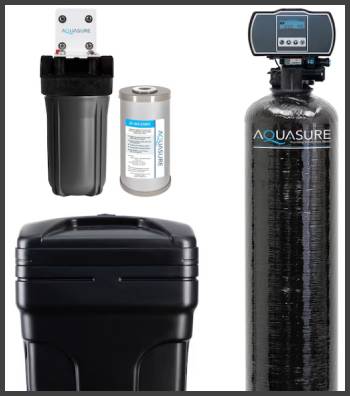
Picture this: I moved into a new house in a region notorious for hard water.
The telltale signs were everywhere—white crust on my showerhead, stiff towels, and spots on my glasses that no dishwasher could erase.
My skin felt like sandpaper, and my water heater was working overtime.
I knew I needed a water softener, but the options were overwhelming.
After researching, I settled on the Aquasure Harmony Series 48,000 Grain Water Softener (AS-HS48D).
Why?
It promised solid performance for my three-bathroom home, a user-friendly setup, and a price that didn’t break the bank at around $500.
The installation was my first real test. I’m no plumber, but I’m handy enough to follow instructions. The Aquasure came with a detailed manual, though I’ll admit, some technical terms threw me off. I watched a couple of YouTube videos to clarify things, and within a few hours, it was hooked up to my main water line.
The bypass valve was a lifesaver, letting me tweak things without shutting off the water supply. Once it was running, I noticed a difference within days. My skin felt softer, my hair wasn’t as brittle, and my appliances seemed to breathe a sigh of relief.
The digital control head was intuitive, letting me set regeneration cycles based on my household’s water use. After a year, I’m still impressed by how it’s held up, though it’s not without quirks, as I’ll explain later.
Pros of The Aquasure Water Softener
- High-Capacity Performance for Bigger Homes
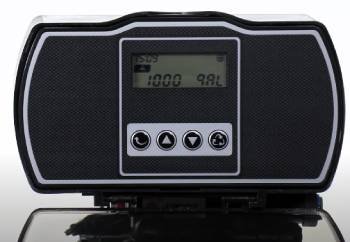
The Aquasure Harmony Series shines for medium to large households.
With models ranging from 32,000 to 64,000 grains, it’s built to handle homes with 3-4 bathrooms and up to five people.
I went with the 48,000-grain model, and it’s been perfect for my family of four.
It uses ion exchange to strip out calcium and magnesium, leaving water that’s noticeably softer. My water tested at 15 grains per gallon (GPG) before installation, and now it’s down to under 1 GPG. That’s a huge win for preventing scale buildup and protecting my pipes.
- User-Friendly Digital Controls
The digital metered control head is a standout. It’s got a backlit LCD that shows the current flow rate, time, and when the next regeneration is due. I love that I can tweak settings to match my water usage—no guesswork needed.
You can choose between time-clock delayed, meter immediate, or meter delayed regeneration modes, giving you flexibility. I set mine to regenerate at night when we’re not using water, and it’s been smooth sailing. The interface feels modern, and once you get the hang of it, it’s a set-it-and-forget-it deal.
- Easy Installation for DIYers
If you’re handy, you’ll appreciate the plug-and-play design. The kit comes with pre-assembled parts, including a prefilled resin tank, which saved me from messing with loose resin beads. The bypass valve and flex hoses made setup straightforward, though I learned the hard way to use at least 8-10 wraps of Teflon tape on fittings to avoid leaks.
My setup took about two hours, and I didn’t need a plumber. If you’re not confident with plumbing, you might want professional help, but for me, the DIY route was a breeze.
- Durable Build and Warranty
The Aquasure is built to last. Its fiberglass-lined polyethylene tank resists corrosion, and the high-quality resin is designed for longevity. After a year, mine shows no signs of wear. The 5-year warranty gives me peace of mind, covering defects and ensuring replacement parts are available.
I had a minor issue with a valve early on, and Aquasure’s customer service sent a replacement part within days, no hassle. That kind of support makes a big difference when you’re investing in a home system.
- Efficient Salt and Water Use
This softener is smart about resources. The metered regeneration only kicks in when needed, based on your actual water usage. I’ve found it uses less salt than older systems my parents had, which guzzled bags of salt like nobody’s business.
My brine tank holds about 250 pounds of salt, and I only refill it every six weeks or so. It’s also water-efficient, which is a plus if you’re eco-conscious or watching your water bill.
Not-So-Good Parts of The Aquasure Water Softener
- Limited Filtration Capabilities
Here’s where Aquasure falls short: it’s a softener, not a filter. It tackles hardness minerals like calcium and magnesium but doesn’t remove contaminants like chlorine, sediments, or heavy metals. If you want drinkable water, you’ll need a separate reverse osmosis (RO) system or whole-house filter.
I ended up adding an under-sink RO unit for my kitchen, which added about $300 to my costs. Some Aquasure models include a basic sediment pre-filter, but it’s not as robust as competitors like Aquasana, which offer integrated filtration for a wider range of contaminants.
- Bulky Design
The Harmony Series isn’t exactly sleek. My 48,000-grain unit is 10” x 10” x 62” and weighs about 120 pounds, making it a beast to move. If you’ve got a tight utility space, you’ll need to plan carefully.
The cabinet-style models are more compact, but they use proprietary parts, which can complicate repairs. I managed to fit mine in my garage, but it’s not something you’ll want to shuffle around once it’s in place.
- Instruction Manual Could Be Clearer
While the installation was doable, the manual could use work. It’s packed with technical jargon that left me scratching my head at first. Terms like “backwash cycle” and “resin bed” aren’t exactly intuitive for a newbie.
I had to supplement with online videos to fully understand the setup process. If Aquasure simplified the language or included a quick-start guide, it’d make life easier for first-timers like me.
- Power Outage Reset Hassle
One annoyance is that the system doesn’t have power loss protection. If you lose electricity, you’ll need to reset the time and regeneration settings. It’s not a dealbreaker, but during a recent storm, I had to reprogram it alongside my microwave and oven clocks.
A battery backup or memory retention feature would be a nice upgrade, especially for areas prone to outages.
Maintenance Tips For Your Aquasure Water Softener
- Keep the Brine Tank Stocked
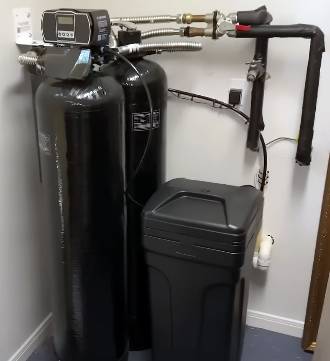
The brine tank needs regular salt refills to keep the system running smoothly.
I check mine every 4-6 weeks, depending on usage.
Use pellet salt—sodium chloride or potassium chloride—since it dissolves evenly and won’t clog the tank.
I learned to keep the tank about two-thirds full to avoid overfilling, which can mess with the regeneration cycle.
If you’re on a low-sodium diet, go for potassium chloride, but it’s pricier.
A 40-pound bag of salt costs me about $10, and I go through a couple a year.
- Clean the Resin Tank Annually
The resin tank is the heart of the softener, and it needs occasional TLC. Once a year, I run a resin cleaner through the system to prevent buildup from iron or other minerals. You can buy resin cleaner for about $15 at hardware stores.
Follow the instructions on the bottle, and use the bypass valve to divert water during the process. This keeps the resin beads efficient and extends their lifespan, which is typically 8-10 years for Aquasure’s fine-mesh resin.
- Check for Leaks and Tighten Fittings
After installation, I had a small leak because I skimped on Teflon tape. Now, I check all fittings every few months to ensure they’re tight. Use a wrench to gently snug up connections, but don’t overdo it—you don’t want to crack the plastic fittings.
If you notice water pooling around the unit, act fast to avoid damage. The bypass valve lets you isolate the system for quick fixes without cutting off your water supply.
- Schedule Regeneration Wisely
The digital control head lets you customize regeneration cycles, so take advantage of it. I set mine to regenerate at 2 a.m. when we’re asleep, so it doesn’t interrupt our water use. If you notice hard water symptoms—like spots on dishes—check the settings.
You might need to adjust the hardness level or regeneration frequency based on your water test results. My local water company provided a free test, but you can buy test strips for about $10 to monitor hardness.
- Monitor the Control Head
The digital display is your friend, but keep an eye on it. If it shows error codes or stops updating, it might need a reset or a new control valve. I had a glitch once, and a quick call to Aquasure’s support team walked me through a reset.
They also sent a replacement valve under warranty when the issue persisted. Clean the control head with a damp cloth to keep it free of dust, and avoid using harsh chemicals that could damage the display.
Comparing Aquasure To Other Brands
Let’s see how the Aquasure Harmony Series stacks up against other big names in water softening: RainSoft, Morton, Culligan, and Clack. I’ve broken it down to focus on what matters most when choosing a system for your home.
- Aquasure Vs. RainSoft
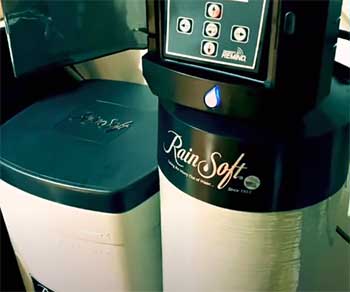
RainSoft’s EC5 Series, priced around $1,500-$3,000, is a premium option with smart features like Wi-Fi monitoring and app-based controls.
It handles high hardness levels (up to 150 GPG) and integrates filtration for chlorine and sediments, unlike Aquasure’s softening-only focus.
However, RainSoft requires professional installation, which can add $500 or more, and its proprietary parts make DIY repairs tricky. Aquasure’s $500 price tag and DIY-friendly setup won me over, as I didn’t need the extra bells and whistles.
If you want smart tech and don’t mind the cost, RainSoft’s a strong choice, but Aquasure’s simplicity and affordability fit my needs better.
- Aquasure Vs. Morton
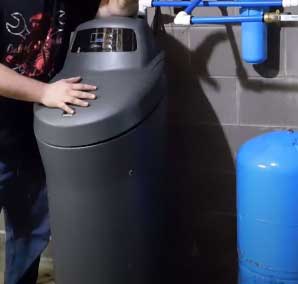
Morton’s M34 Water Softener, around $600-$800, is a budget-friendly rival with a solid reputation.
It’s compact (13” x 43”) and uses a look-ahead regeneration system to save salt, similar to Aquasure’s metered setup.
Morton’s resin lasts about 7-10 years, slightly less than Aquasure’s 8-10 years, and its 3-year warranty is shorter than Aquasure’s 5 years.
I found Morton’s controls less intuitive, with a basic LCD that lacks Aquasure’s detailed feedback.
Morton’s a great pick for smaller homes, but Aquasure’s higher capacity (48,000 grains vs. Morton’s 34,000) and longer warranty made it better for my three-bathroom setup.
- Aquasure Vs. Culligan

Culligan’s High-Efficiency (HE) Series, priced at $1,200-$2,500, is a heavy hitter with advanced features like a Smart-Sense regeneration system that adapts to water usage patterns.
It handles up to 120 GPG and includes a salt monitor for low-level alerts, which Aquasure lacks.
Culligan’s professional installation is nearly mandatory, adding to the cost, and its maintenance contracts can feel like a subscription trap.
Aquasure’s lower price and DIY installation were more my speed, though Culligan’s durability (10-15 years) and optional filtration make it appealing if you’ve got a bigger budget and want a full-service experience.
- Aquasure Vs. Clack
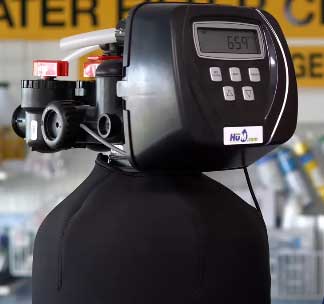
Clack’s WS1 Series, often sold through dealers for $800-$1,500, uses high-quality Clack valves known for reliability.
Its resin bed handles up to 100 GPG, close to Aquasure’s 110 GPG, and its modular design makes repairs easier than RainSoft’s proprietary setup.
However, Clack systems vary by dealer, so quality and pricing can be inconsistent.
I liked Aquasure’s standardized kit and clear pricing through retailers like Amazon.
Clack’s a solid choice if you find a reputable dealer, but Aquasure’s straightforward package and 5-year warranty gave me more confidence for my DIY approach.
Why Aquasure Stands Out?
After a year with the Aquasure Harmony Series, I’m sold on its value. It’s not the flashiest system, but it gets the job done without breaking the bank. The combination of high-capacity softening, easy maintenance, and solid customer support makes it a reliable choice.
Compared to pricier brands like RainSoft or Culligan, it’s a budget-friendly option that doesn’t skimp on performance for most households. If you’re tired of hard water wreaking havoc, Aquasure’s a smart investment that’ll save you time, money, and headaches.
Frequently Asked Questions (FAQ)
Aquasure water softeners typically last 10-15 years with proper maintenance. The resin bed, which does the heavy lifting, lasts about 8-10 years before needing replacement. Regular salt refills and annual resin cleaning can extend the system’s life. My unit’s still going strong after a year, and the 5-year warranty covers defects, so I’m confident it’ll last.
The “best” brand depends on your needs. Aquasure’s great for affordability and ease of use, especially for medium-sized homes. RainSoft offers smart features, Culligan excels in durability, and Morton’s ideal for smaller budgets. For my three-bathroom home, Aquasure’s balance of price and performance won out.
Aquasure water softeners are made in the USA by Aquasure USA. This was a plus for me, as I prefer supporting domestic manufacturing. The company’s been in the water treatment game for over 25 years, so they’ve got a solid track record.
As mentioned, Aquasure water softeners last 10-15 years with proper care. The resin tank and control head are durable, and the 5-year warranty covers any manufacturing issues. Regular maintenance, like salt refills and resin cleaning, is key to hitting that lifespan.
Conclusion: Why You Should Buy Aquasure?
After a year of softer water, shinier dishes, and happier appliances, I’m convinced the Aquasure Harmony Series is worth every penny. It’s affordable, reliable, and easy to maintain, making it perfect for families like mine.
Sure, it’s not a filtration system, but for tackling hard water, it’s tough to beat at $500. Compared to pricier brands, Aquasure delivers where it counts. If you want to say goodbye to limescale and hello to softer skin, grab this softener—you won’t regret it.
